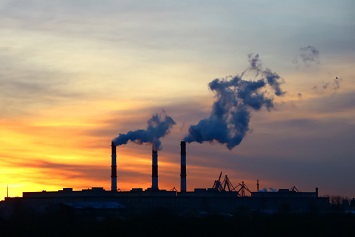On October 15, 2020, the EPA proposed Cross-State Air Pollution Rule (CSAPR) revisions to reduce summertime nitrous oxides (NOx) emissions from upwind power plants in 12 states: Illinois, Indiana, Kentucky, Louisiana, Maryland, Michigan, New Jersey, New York, Ohio, Pennsylvania, Virginia, and West Virginia.
These states “projected 2021 emissions were found to contribute at or above a threshold of 1% of the NAAQS (0.75 ppb) to the identified nonattainment and/or maintenance problems in downwind states,” according to the EPA.
Originally, 21 states were expected to be impacted by this proposed rulemaking, but the EPA found 2021 projected emissions for 9 states (Alabama, Arkansas, Iowa, Kansas, Mississippi, Missouri, Oklahoma, Texas, and Wisconsin) are not expected to “significantly contribute to nonattainment and/or maintenance problems in downwind states,” according to the EPA.
This proposed rule change is in response to a September 2019 decision in Wisconsin v. EPA by the U.S. Court of Appeals for the D.C. Circuit.
At the heart of the issue is the “Good Neighbor” provision of the federal Clean Air Act (CAA)—the primary provision addressing “interstate transport,” which is the method by which emissions are carried across state lines by prevailing winds.
“The main purpose of the Good Neighbor Provision (section 110(a)(2)(D)(i)(I) of the CAA) is to prevent ‘significant contribution’ by ‘upwind’ states’ emissions to violations of national ambient air quality standards (NAAQS) in ‘downwind’ states,” according to Norman W. Fichthorn, environmental attorney in the Washington, D.C., office of Hunton Andrews Kurth, in the firm’s Nickel Report. “Although states have the principal responsibility to implement this provision, EPA periodically has invoked its CAA authority to impose requirements to curb interstate transport when it determines upwind states have not adopted adequate controls.”
The EPA acted in this area in 2016 by issuing the CSAPR Update, which set emissions budgets for 22 states in the eastern half of the United States. EPA predictions showed that these states would exceed 2008 NAAQS limits. The EPA called for more stringent ozone NAAQS in 2015 that are being addressed through state implementation plans (SIPs) currently under EPA review.
Litigation History
The CSAPR Update was largely upheld by the D.C. Circuit, although the court did find one critical error in the Update. The court sided with environmental groups and Delaware “that EPA had failed to demonstrate that it had satisfied its obligation to align the timeframe for required emission reductions in upwind states with deadlines for downwind states to meet the NAAQS,” according to the Nickel Report. “The court cited language in the rulemaking record describing the CSAPR Update’s emission limits as providing a degree of relief for downwind areas that—pending further analysis by EPA—may be only ‘partial.’”
Meanwhile, in New York v. EPA, the D.C. Circuit Court issued another ruling striking down the 2018 “CSAPR Close-Out Rule,” saying it contained the same analytical flaw regarding timing identified in the Wisconsin case. However, the court did not set any timeline for the EPA to take actions to correct the flaw when it remanded the matter back to the EPA. The court offered plaintiffs the option of filing for a writ of mandamus if the EPA failed to take timely action.
Instead, the environmental groups that filed the New York case were joined by additional environmental groups that responded by filing Downwinders at Risk, et al. v. Wheeler in the D.C. Circuit on February 7, 2020. In that suit, environmentalists claimed the EPA “failed to perform a ‘nondiscretionary duty’ to adopt federal implementation plans fully addressing the Good Neighbor Provision for 20 upwind states,” according to the Nickel Report. Those states include Alabama, Arkansas, Illinois, Indiana, Iowa, Kansas, Louisiana, Maryland, Michigan, Mississippi, Missouri, New Jersey, New York, Ohio, Oklahoma, Pennsylvania, Texas, Virginia, West Virginia, and Wisconsin.
Only 12 days later, the EPA was filed on again over this issue in the U.S. District Court for the Southern District of New York. This case, New Jersey, et al. v. Wheeler, basically made the same claim as the Downwinders case. This case was filed by Connecticut, Delaware, Massachusetts, New Jersey, New York, and New York City, which limited their claims to only seven upwind states: Illinois, Indiana, Michigan, Ohio, Pennsylvania, Virginia, and West Virginia.
In both cases, attorneys representing the EPA argued the district courts did not have the proper jurisdiction to hear the cases. Plaintiffs maintained there was jurisdiction and demanded a court-imposed deadline for CSAPR rulemaking action by the EPA.
On July 28, 2020, before any decisions were made by the D.C. Circuit, the New York Circuit issued a decision, including a deadline of March 15, 2021, for a final rule to be issued by the EPA for the seven upwind states addressed in the New Jersey, et al. case.
Meanwhile, in the Downwinders case in the D.C. Circuit, the EPA made a filing on September 4, 2020, that said it “intends to comply” with the ruling made in the New York district court and that it “intends to issue a final, regional-scale rule by March 15, 2021, that will satisfy the Good Neighbor requirements for all 20 of the upwind states with respect to the 2008 NAAQS, and not just the 7 states” addressed by the New York district court’s order.
Looking Forward
Once the proposed rulemaking is published in the Federal Register, the EPA will accept comments for 45 days and will hold a virtual public hearing 2 weeks after publication. With this announcement, the EPA is expected to meet the March 15 deadline imposed by the New York District court and enact more stringent regulations before the summer 2021 heat drives up ozone levels.
Although the proposed CSAPR Update only impacts emissions for electricity generators, “the July 28 district court order explains that, to comply with the order, EPA must ‘promulgate a complete-remedy rulemaking,’” according to the Nickel Report. This “statement indicates EPA is expected to address whether (and, if so, how) other emitting sources—potentially including a diverse array of facilities such as petroleum refineries, cement plants, industrial boilers and combustion turbines, paper mills and steel plants—should become subject to new emission limits to mitigate interstate transport, as well as whether any additional controls on electricity generators are warranted.”
The EPA argues that addressing all these factors and industries will require more time and research. “In an apparent acknowledgment of EPA’s concerns on that score, the July 28 order (in the New Jersey case) states—in line with language in the DC Circuit’s September 13, 2019, opinion—that EPA is not precluded from attempting ‘to demonstrate that it would be impossible to promulgate the final notice of a complete-remedy rulemaking by March 15, 2021.’ And, likewise echoing a passage in the DC Circuit decision, the order emphasizes that ‘EPA still has flexibility on the substance of its rule,’” according to the Nickel Report.
“With this proposal, the Trump Administration is demonstrating once again its commitment to improving air quality across the nation,” said EPA Administrator Andrew Wheeler. “This update to the Cross-State Air Pollution Rule will alleviate interstate air pollution and improve quality of life for many Americans.”
Learn more about the proposed CSAPR Rule Update.


